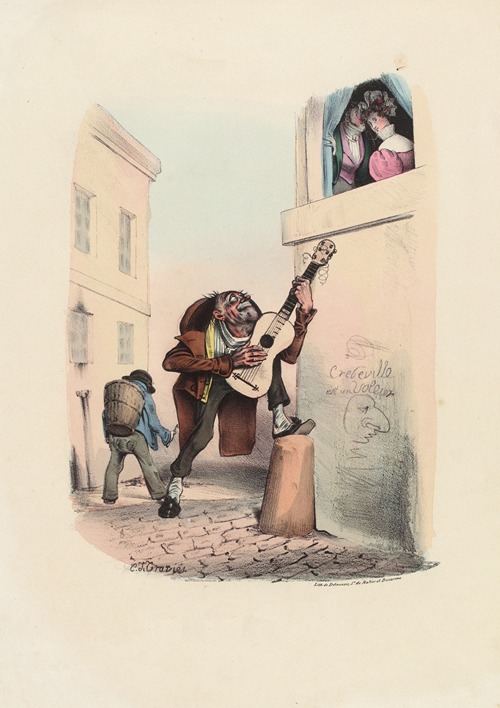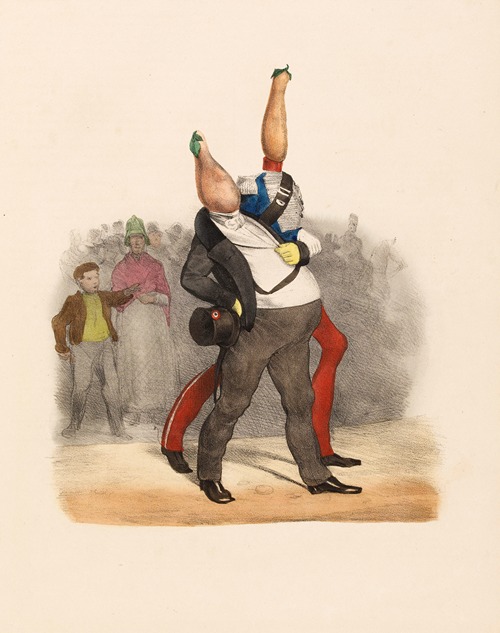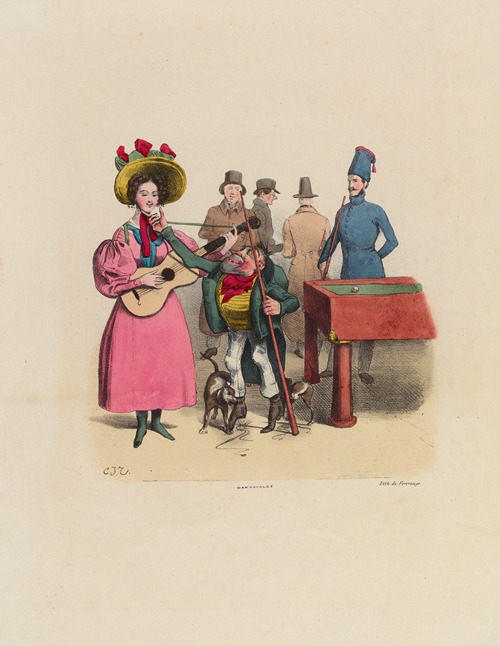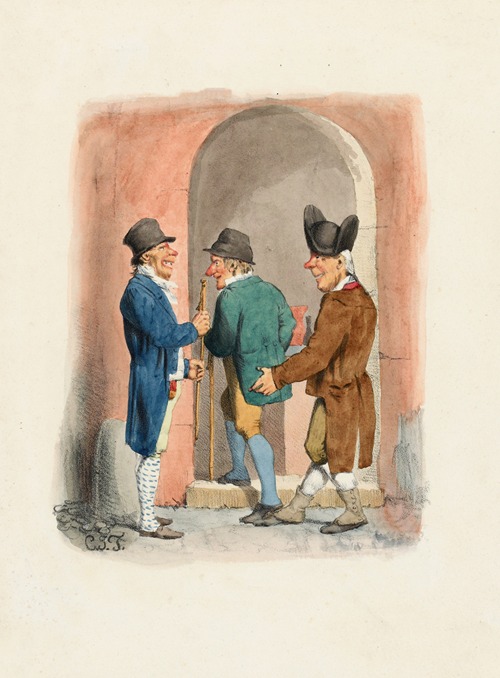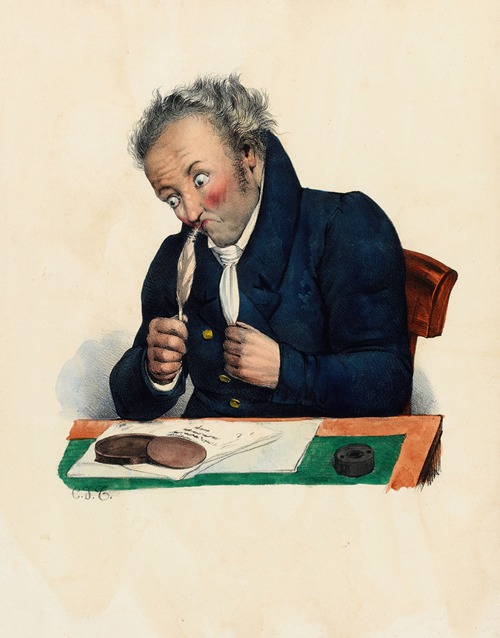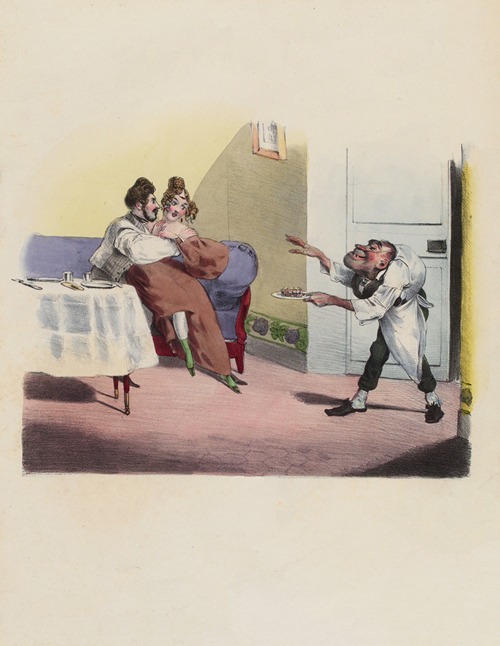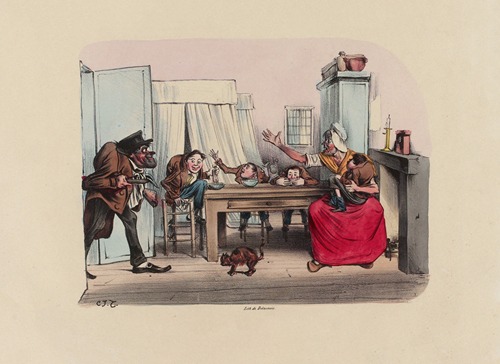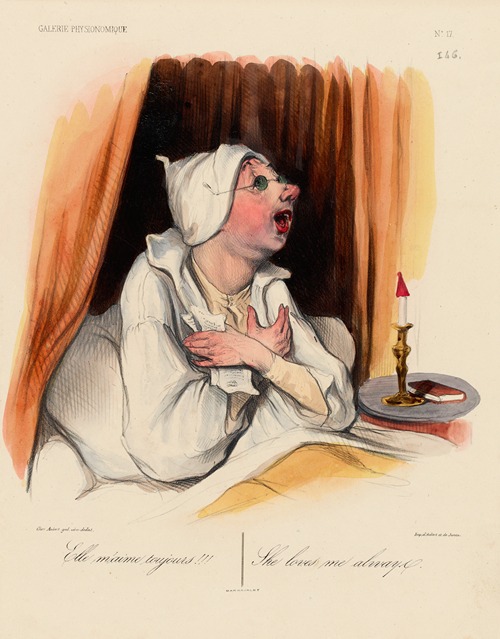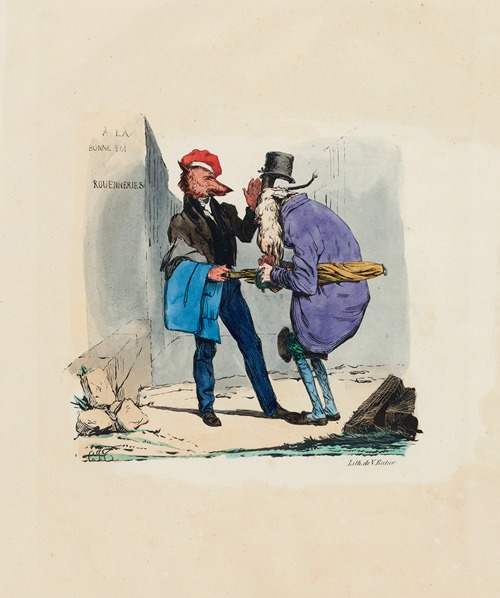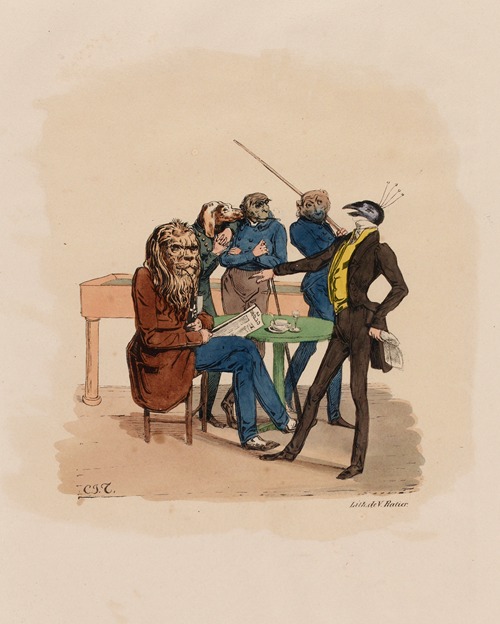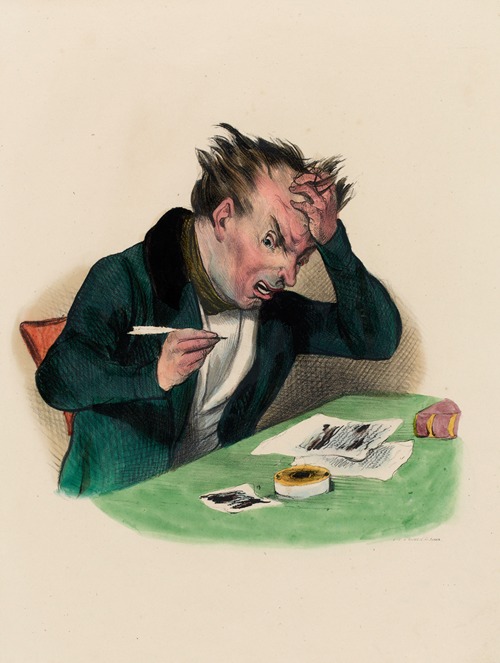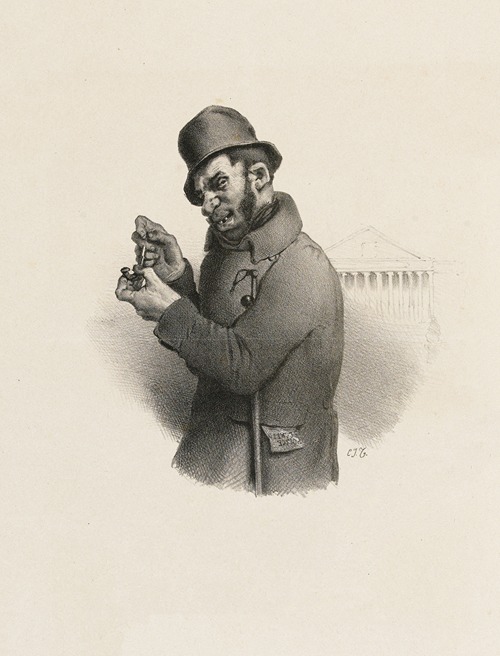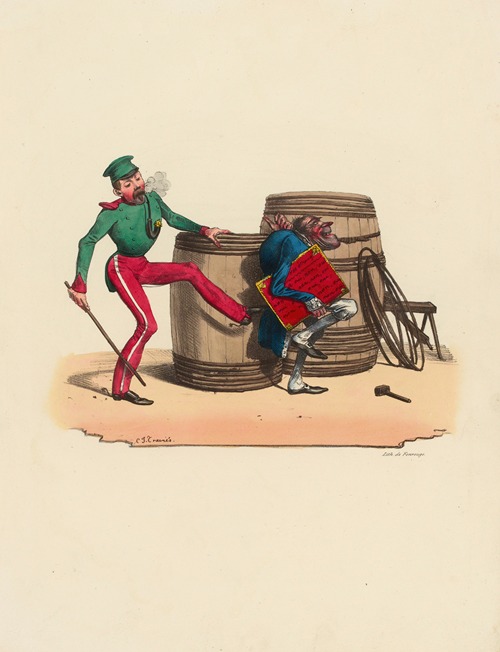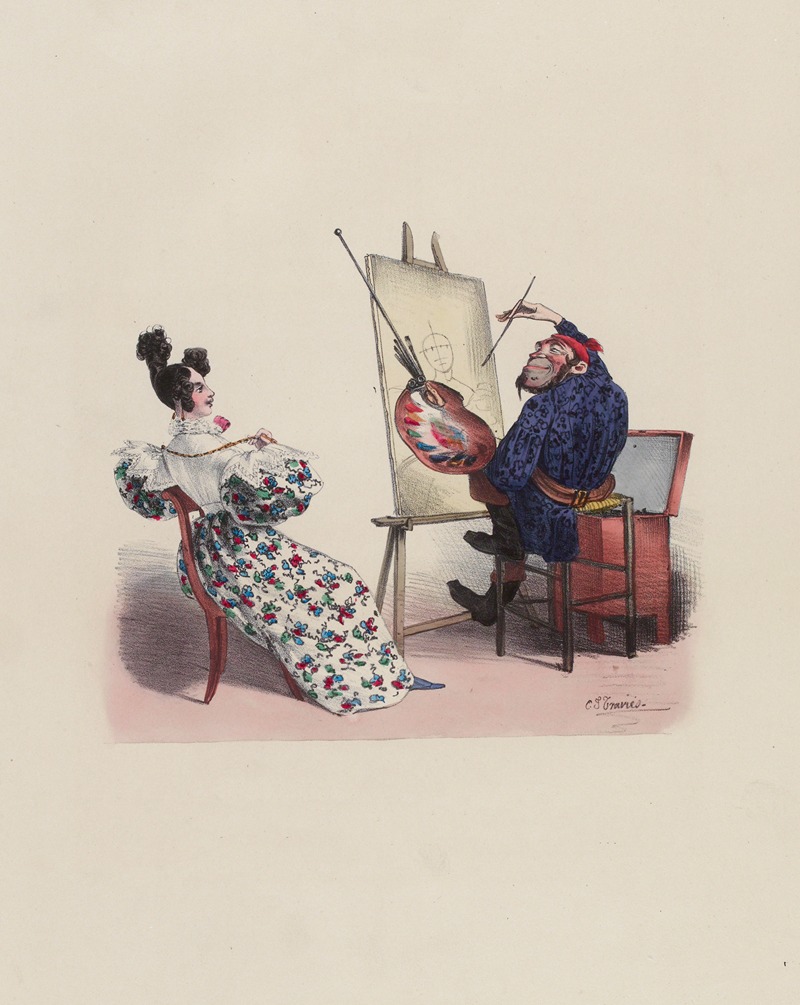
Charles-Joseph Traviès de Villers, also known simply as Traviès, was a Swiss-born French painter, lithographer, and caricaturist whose work appeared regularly in Le Charivari and La Caricature. His Panthéon Musical was one of the most famous and widely reproduced musical caricatures of the 19th century. His younger brother was the painter and illustrator Édouard Traviès.
Traviès was born in Wülflingen (now a district in the Swiss city of Winterthur) although he later became a naturalised French citizen. His father was an engraver of English descent. His mother was from a French family and a descendant of the Marquis de Villers. He studied art in Strasbourg and later under François Joseph Heim at the École des Beaux-Arts in Paris. When he was a young man, a series of financial misfortunes left his parents in poverty, and he became their sole support. He began his career producing portraits and genre paintings and made his debut at the Paris Salon in 1823. He also turned his hand to producing designs for wallpaper and printed fabrics.
By the late 1820s he had become a popular caricaturist enjoying particular success with his collections Tableau de Paris and Galerie des Épicuriens. He then joined Charles Philipon's satirical magazines La Caricature and La Charivari where he was to become one of their most prolific caricaturists. Both magazines were highly critical of the July Monarchy and its king, Louis Philippe, whom they mercilessly caricatured. His most famous creation during this period was the character "Mayeaux" (sometimes spelled "Mahieux") a hunchback who came to represent all the faults and foibles of the bourgeoisie who were the principle supporters of Louis Philippe. The character, which first appeared in the pages of La Caricature in 1831, was the inspiration for several other satirists including Daumier, Grandville, and Honoré de Balzac. Using pseudonyms, Balzac wrote two articles on Mayeux's adventures for La Caricature—"M. Mahieux en société" and "M. Mahieux au bal de l'Opéra".
During this time Traviès also became involved in early socialist movements, an interest which he maintained throughout his life. He was first attracted to Saint-Simonianism and then to the ideas of Simon Ganneau, becoming a follower of Ganneau's sect Evadisme which focused heavily on equality of the sexes. In his later years he would become increasingly attracted to the utopian socialism of Charles Fourier and Fourier's disciple Jean Journet. He also carried out lengthy correspondence with Flora Tristan and François Ponsard, a poet and playwright of socialist leanings.
Following the assassination attempt on Louis Philippe in July 1835, a law was passed on 9 September 1835 forbidding political caricatures and articles critical of the king. In light of the subsequent fines and imprisonments imposed on the press for violations of this law, Traviès, like many of his colleagues, turned his attention to satirizing French customs and culture. He also provided illustrations for Balzac's La Comédie humaine and Eugène Sue's Les Mystères de Paris as well as producing many depictions of the Parisian poor and their daily life. Baudelaire, who was an admirer of his work, including these later pieces, wrote of Traviès:
He is the prince of the unfortunate. His muse is a nymph of the suburbs, pale and melancholy. [...] Traviès has a deep feeling for the joys and sorrows of the common people. He knows the scoundrel thoroughly, and he loves him with tender charity. For this reason his Scènes Bachiques will remain a remarkable work.
When Baudelaire wrote these words in 1857 he observed that Traviès had been inexplicably "missing from the scene" for quite a while. After 1845 Traviès had worked more and more sporadically. The last fourteen years of his life were marked by depression and illness. However, he exhibited portraits in the 1848 and 1855 Paris Salons and finally managed to complete his religious painting Christ et la Samaritaine which was exhibited in the 1853 Salon and bought by the French government. He died in his Paris apartment on 13 August 1859 at the age of 55. According to contemporary obituaries, he died in poverty lying on a straw bed.
